Field Research at Poker Flat Research Range Super Site in Alaska
In collaboration with theInternational Arctic Research Center (IARC) of the University of Alaska Fairbanks, one of the International Collaboration Sites of ArCS II, various research activities and observations are conducted in Alaska. In 2022, researchers stayed at IARC conducted research related to the Research Program on Land at the Poker Flat Research Range super site (PFRR), also one of the International Collaboration Sites, as well as activities related to research on other projects.
Overview of the Field Research in Alaska 2022
Writer: Hideki Kobayashi (JAMSTEC)
We had the opportunity to stay at the International Arctic Research Center (IARC) of the University of Alaska Fairbanks for an extended period of time, and while in Fairbanks from early May around the snow melts until the end of November, we worked at the Poker Flat Research Range, one of ArCS II’s International Collaboration Sites.
One of the purposes of our stay was to respond to instrument troubles that occurred when we were unable to visit the site since the spread of the novel coronavirus disease (COVID-19). My last visit to the site was in early March 2020. However, during the course of my visit, visitors were restricted to enter the University of Alaska due to COVID-19, and I was unable to fully inspect the site. Fortunately, with the strong support of researchers and technicians at the University of Alaska, we were able to continue acquiring the main data. During this stay in 2022, we restored the greenhouse gas flux observation system (eddy covariance system) on the forest floor, which was not in good condition, replaced the cables of the spectroradiometer systems that obtain satellite validation data, and removed broken sensors (Fig. 1).
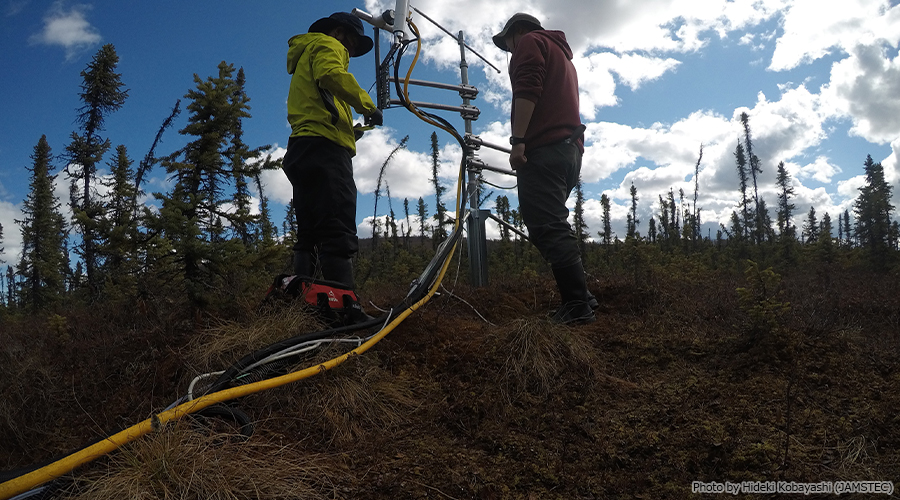
Other projects included the construction of a soil warming experimental area to study how forest ecosystems change as a result of permafrost thawing, which was planned as part of research by the Japan Agency for Marine-Earth Science and Technology (JAMSTEC). Starting in mid-May, we dug dozens of holes approximately 1.5 m in depth in the ground and buried the rod-shaped heaters. This was our first experience drilling through permafrost layers, and although it took longer than originally planned, we were able to install the heaters by mid-June with the help of our collaborators at the University of Alaska. In this experimental area, an automatic gas chamber system has been installed to monitor long-term variations in greenhouse gas fluxes, and observations have begun (Fig. 2).
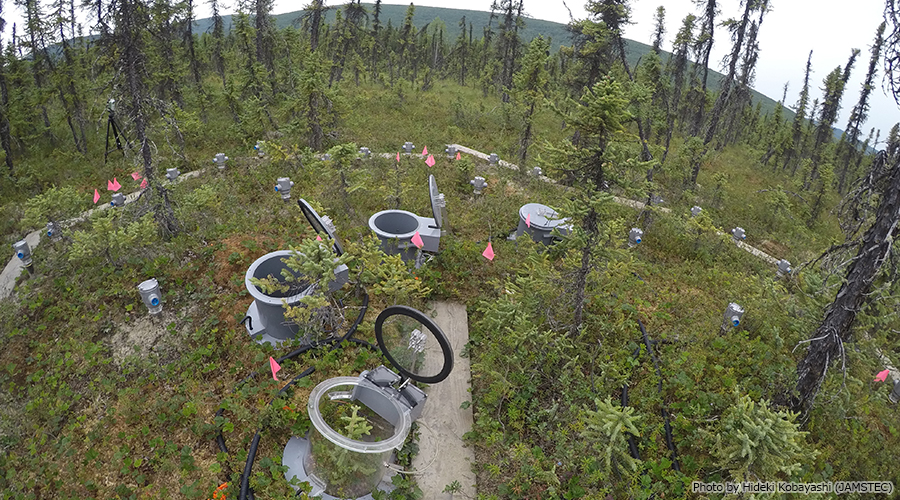
We also conducted activities to obtain ground validation data in conjunction with an aircraft observation campaign conducted as part of NASA’s Arctic-Boreal Vulnerability Experiment (ABoVE) project. This year, the airspace over the Fairbanks area was covered with forest fire smoke from late June to mid-July, and for a time the acquisition of observation data was compromised, but by late July the smoke gradually subsided and we were able to acquire ground verification data in time for aircraft observations over the Poker Flat site in late July 2022. After the NASA’s aircraft observations in the Alaska area, there was a NASA open house event at the Fairbanks International Airport, where we were able to see the Gulfstream III (NASA C-20A) aircraft used in the aircraft observations (Fig. 3).
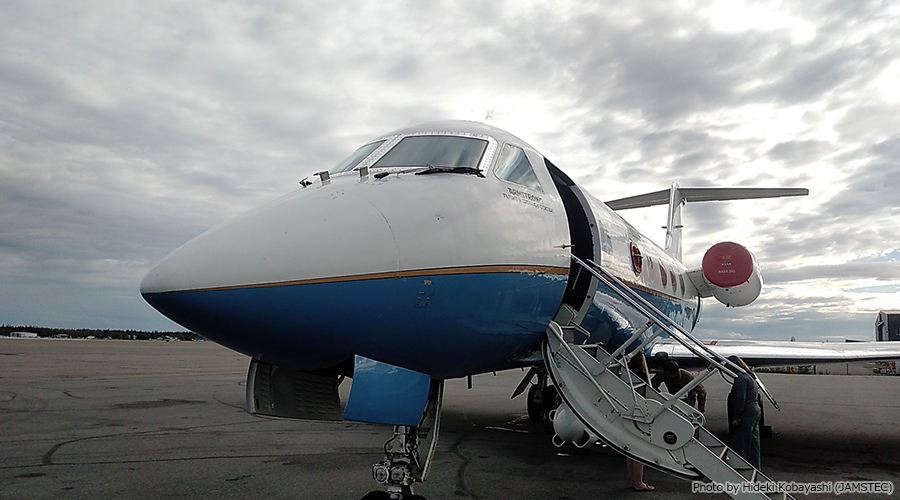
During this stay, it was a great benefit to be able to see the seasonal changes at the observation site from the snow melts to summer and fall, and the ground is now covered with snow again. Together with the researcher who accompanied me, we were able to acquire various data. We plan to continue our observations in the field while gradually analyzing these data.
I would also like to thank Dr. Hajo Eicken, Director of IARC, our collaborators, and the staff at the Poker Flat office of the Geophysical Institute of the University of Alaska Fairbanks, for all their help during this stay.
Wildfire in Alaska 2022
Writer: Hideki Kobayashi (JAMSTEC)
Fairbanks and surrounding area were hit by one of the largest wildfire events in the 2022 season. This is because there has been little rain since the snow melted in early May, and the forest floor has dried up due to strong sunlight and dry air. According to the articles in the local newspaper, Daily News-Miner, the main cause of the smoke that blanketed Fairbanks was a wildfire happened in an area about 80-100 km west of district (Clear fire, Mint Lake fire). The burned area of fires across Alaska is reportedly well over 2 million acres (~8100 km2 caused by lightningsup>), more than double the average from the past record. In the 2022 season, of the 557 wildfires that identified in Alaska by the end of July, 253 were human-induced and 268 were caused by lightning1). The human-induced incidents were roughly half of total, however, looking at past statistical data, the burned area caused by lightning strikes is overwhelmingly larger2), and it is possible that the situation was similar this year as well.
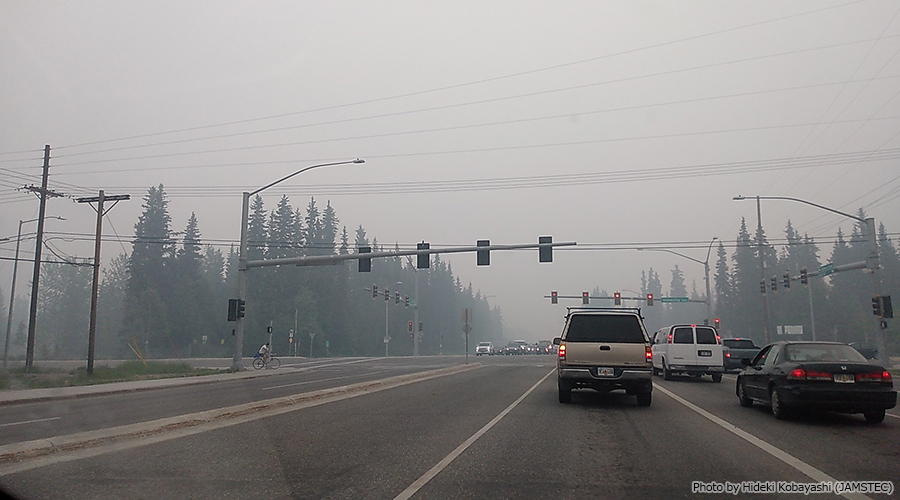
Around the end of June, air pollution caused by smoke began to become serious even in Fairbanks city. After being outdoors for a while, I developed a sore throat, and even schools for kids in the city canceled or postponed outdoor activities. In addition, gas stations and food truck restaurants, which are often found in Fairbanks, were temporarily closed due to the smoke. Even at the Poker Flat Research Range, one of the ArCS II International Collaboration Sites, the effects of the smoke became serious, and until around the end of July when the air pollution from the smoke settled down, we had to reduce outdoor activities while monitoring the air pollution situation.
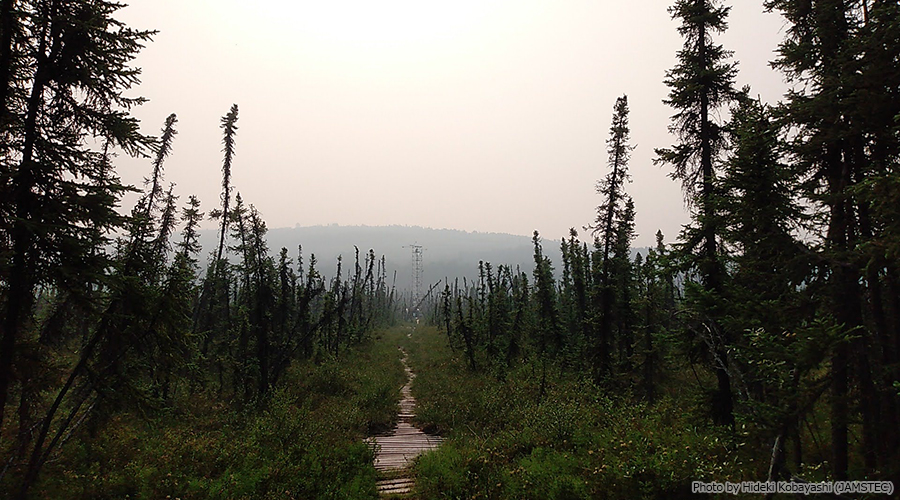
During my stay, I was able to learn firsthand how wildfires can have a serious impact on the local community. Fires cause deaths, burn down properties such as houses, affect infrastructure such as power outages, and impede the economic activities of residents and tourists due to air pollution. In recent years, wildfires in Alaska have increased in frequency.
I was reminded of the importance of managing forest fires. We have provided data obtained from our monitoring site at the Poker Flat Research Range to the Alaska Fire Service. We hope that our activities will continue to contribute to improving the accuracy of wildfire early warning systems.
References
1) Fairbanks Daily News-Miner articles “Warm weekend weather stokes Clear and Minto Lakes fires; evacuation orders in place (June 27, 2022), “Alaska on Fire: Thousands of lightning strikes and a warming climate put Alaska on pace for another historic fire season” (July 10, 2022), “Fire season winds down in Alaska, but the potential for blazes remains” (August 4, 2022)
2) Alaska’s Changing Wildfire Environment, International Arctic Research Center, University of Alaska Fairbanks (https://uaf-iarc.org/alaskas-changing-wildfire-environment/ ) (Access date: Nov. 14, 2022)
